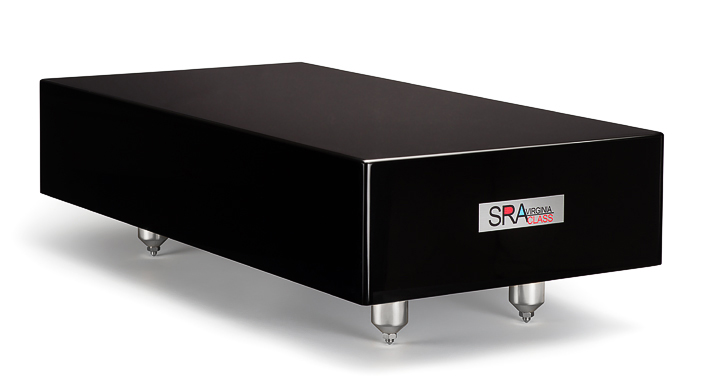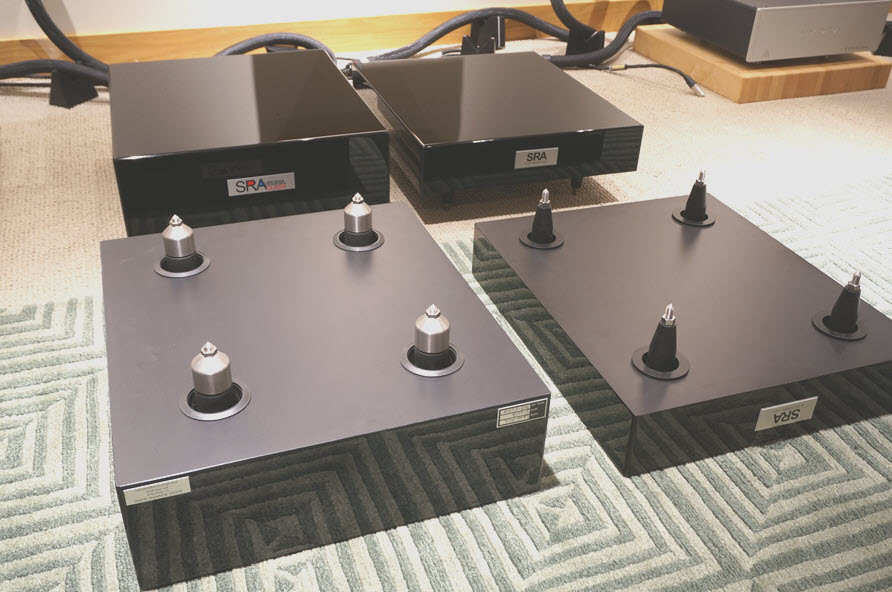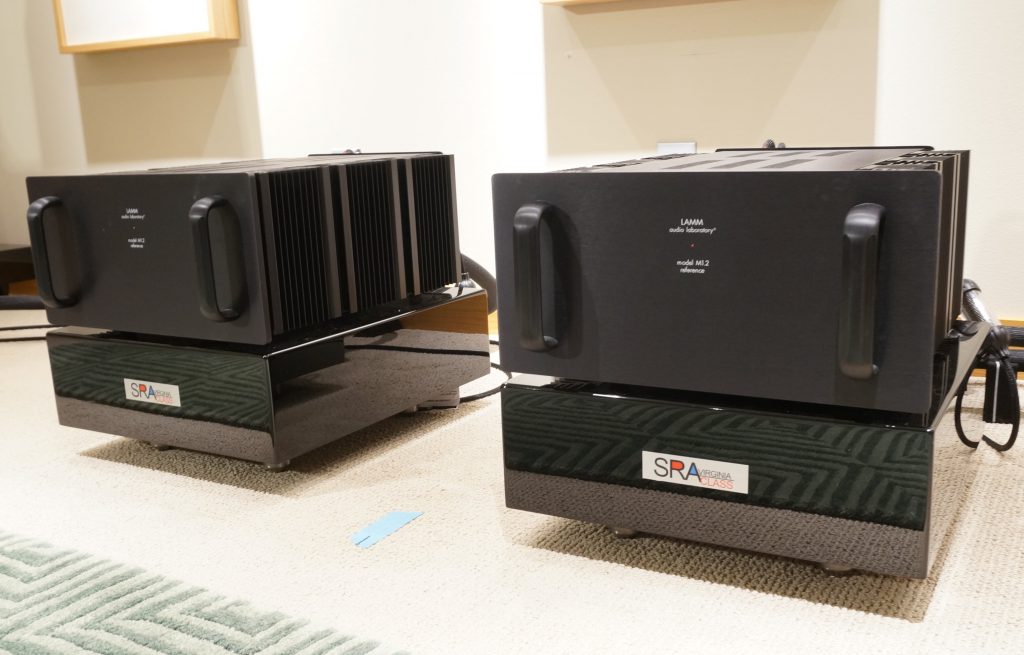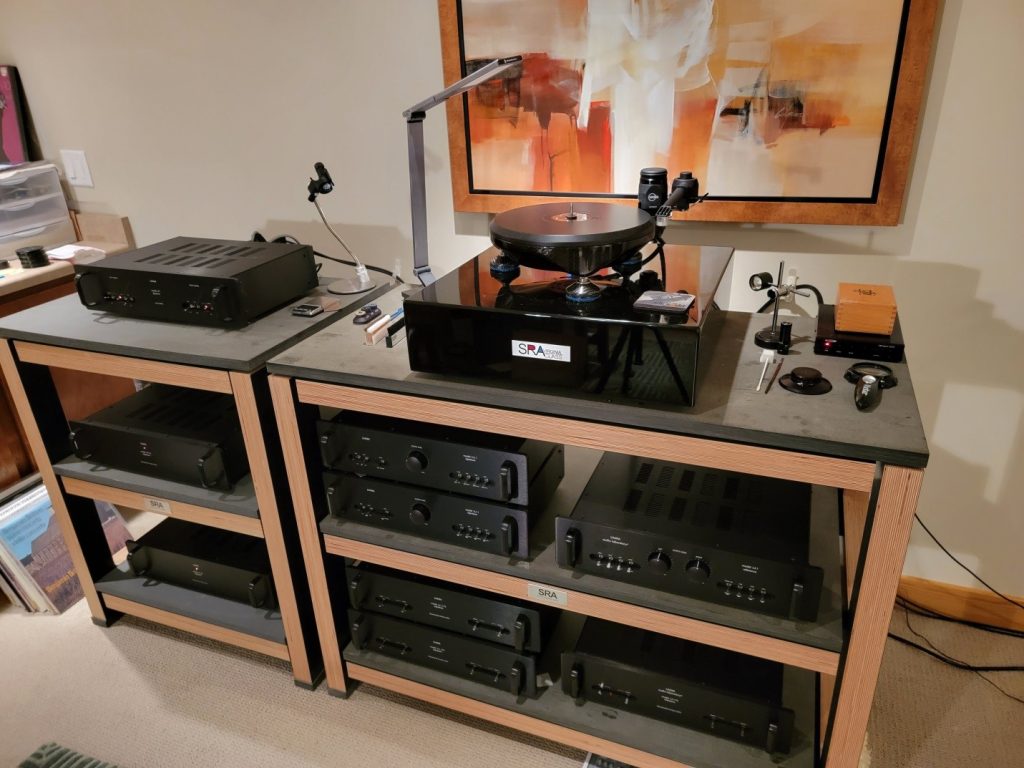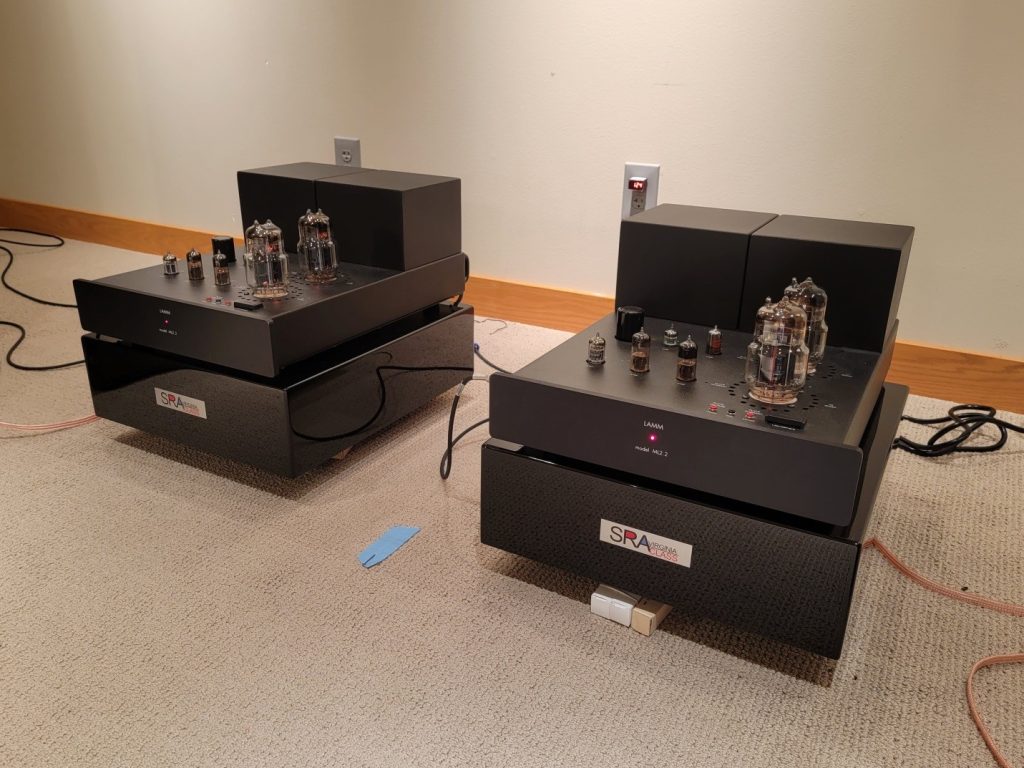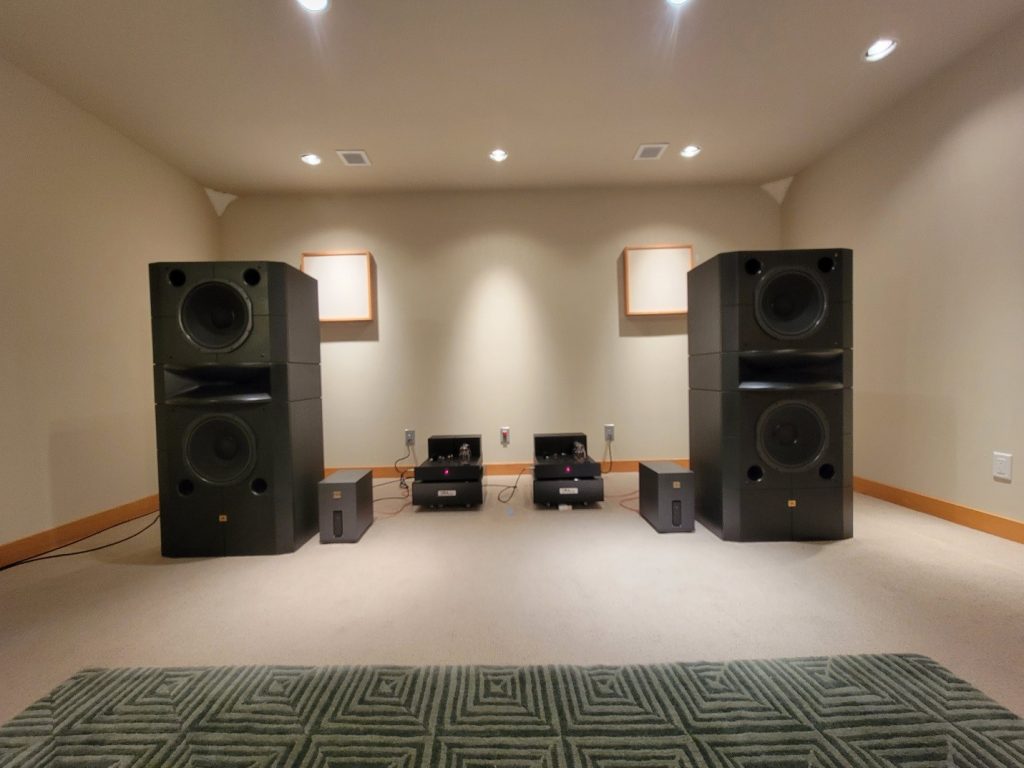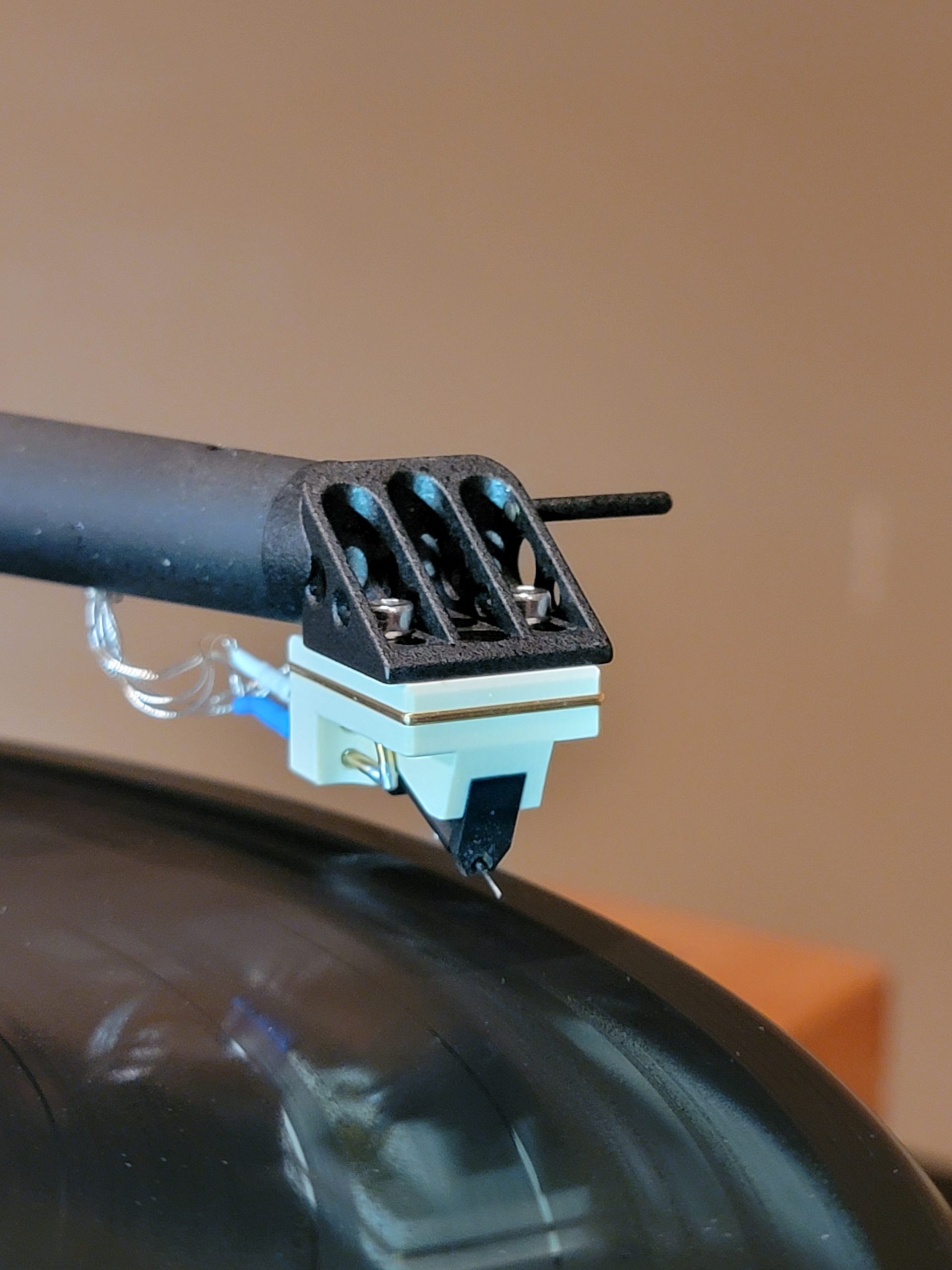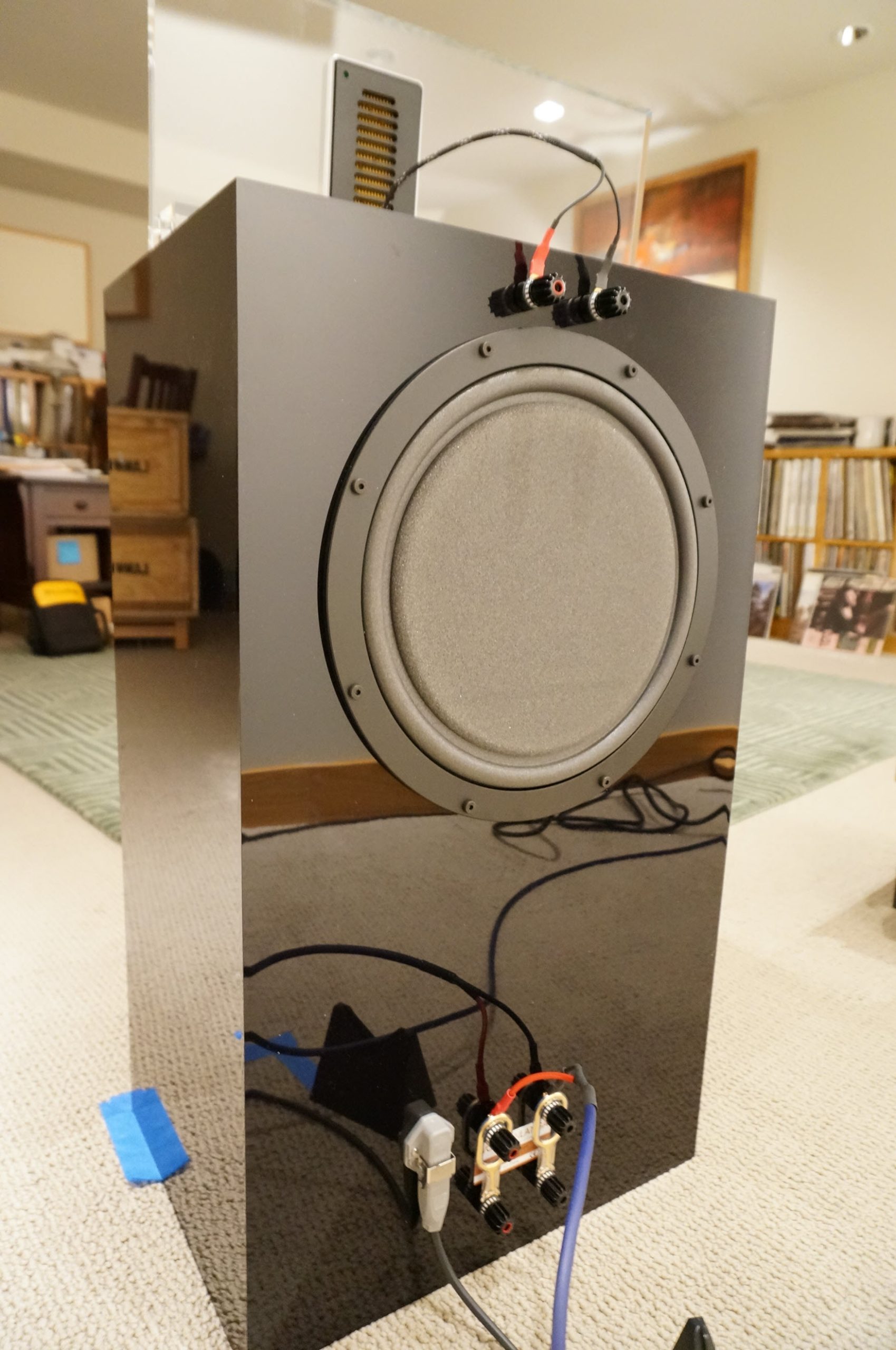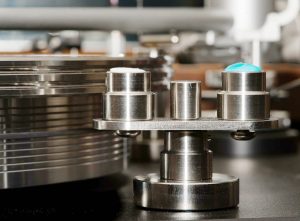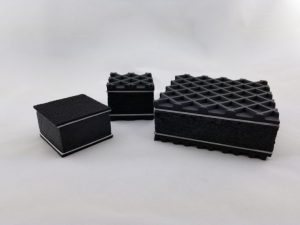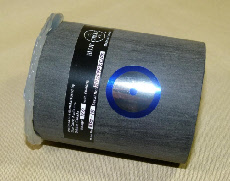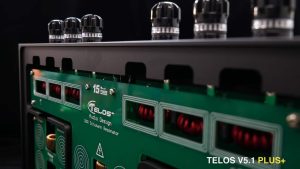The Virginia-Class Referenceαε isoBASE™ is Silent Running Audio's (SRA) statement platform for vibration abatement, isolation and sound reinforcement in audio source and electronic components. SRA CEO Kevin Tellekamp describes it as "the culmination of what we've learned over 30 years in the design and manufacture of vibration and acoustical solutions for the aerospace, military, electronics and medical industries."
Having known him over the last decade I can tell you that when it comes to the field of vibrational analysis and innovative problem resolution, Tellekamp, the scientist, knows his stuff. He owns two other companies; one applies air-based and servo-based solutions in the scientific and medical fields, the other specializes in industrial and military applications.
An example from SRA's literature: Tellekamp's clinical group recently worked with a New York City hospital to resolve problems with a large Computed Tomography scanner (CAT scan) installation. Despite the scanner's massive weight and location in a special bunker with four-foot-thick, steel lined concrete walls, it proved vulnerable to image quality problems caused by vibrations from street and subway traffic, overhead airplanes, and those generated from mechanicals within the building itself. Analysis made obvious that mass loading was not the way to go. "Looking solely at an object's weight and attempting to arrive at a solution based on critical mass, one can do more harm than good."
The very names of two SRA platforms, Ohio Class and Virginia Class, are a clue to Tellekamp's association with nuclear submarine manufacture. Run silent, run deep. You'll also find his work in advanced stealth fighter jets and at NASA. He holds 40 patents. You need a government security clearance to visit his factory.
On top of these competencies, physics and math prodigy Kevin Tellekamp is a dyed-in-the-wool audiophile with a 25k+ LP collection. His spare-no-cost custom designed listening room is also a vibration abatement laboratory stocked with SRA products. (I only wish I could write-off my room.) You got to love it when a hard scientist applies his specialty knowledge to his hobby, to our hobby. SRA has provided solutions to audiophiles for almost twenty years.
It's not all good vibrations, excitations (oom bop bop)
Everything vibrates. Even the Earth vibrates around three cycles per second. Close at hand or at a distance, structural elements in and around your home absorb and transmit energy to and from each other—and to your audio system. Think your system is immune sitting on a thick concrete floor? Think again—concrete is an excellent transmitter of vibration.
Let's review the trinity of vibration sources that can impact audio gear:
- Structure borne vibration typically coming through the floor. (Traffic, people walking around in your house, planes, trains, the dishwasher.) Buildings typically have a rigid connection between themselves and the ground. Vibrational energy outside the building enters as a mechanical wave that excites the floor and walls and everything on them; depending on the frequencies at work, these can gain a secondary path through the air.
- Air-borne vibration (the guy up the street mowing his lawn, that kid next door playing tennis off his garage door at 9 PM, don't forget wind). Excitation arriving through the air can often range between 5 to 100Hz and will transfer its energy to your house.
- Audio system self-generated vibration (power supply hum, transport whirr, electricity flow itself creates vibration.) Speakers transmit mechanical energy into the floor.
And of course there's music itself; it is the greatest single contributor to vibration in your audio room.
Music is good for your ears but bad for the equipment that reproduces it.
Here are simple truths: Vibration is an excitation or force oscillating at a specific frequency over time (here, expressed in Hertz). Vibration has a particular amplitude that describes its magnitude or travel distance. Vibration physically alters audio equipment.
Every thing has a resonant frequency. Resonance occurs when the frequency of excitation equals the natural frequency of an object. When resonance occurs, the amplitude of the vibration increases; it is limited only by the damping or abatement available to the object. Resonance can lead to unwanted frequency responses and phase distortions that may impair tonality and result in false coloration of your music. Exactly what vibrates and when it vibrates varies with the specific gear you have and with each piece of music you play. The very system that provides the musical object of your desire attacks itself in doing so.
Consider an example: Perhaps your amplifier uses Teflon capacitors, or your cabling has a Teflon dielectric. It turns out that in the frequency range 1500-6300Hz, PTFE is a high frequency resonant sound absorber, dependent on the grade of Teflon. Vibration of a capacitor's Teflon creates sub-micron variations in its relation to the capacitor's plate, yielding tiny differences in capacitance. Multiplying that effect across all the caps in your amplifier can result in audible signal distortion. When oscillated, printed circuit boards flex all their components. As your turntable rotates, your tonearm and cartridge can pick up resonance from mechanical jitter. No component is immune.
The good news is that nowadays, audiophiles are paying more and more attention to system infrastructure: clean power and its delivery, room acoustics, and vibration isolation and abatement. (That's not a priority list—they are all keys to better sound.) And today the marketplace offers a broad array of footers, rollers, woodblocks, cones, bases, shelves, and many other devices to choose from, all claiming to limit or squash vibration. Every one of these 'cures' has its own resonance frequency potential. From a 32Hz double low C organ note to the 3520Hz top A of a piccolo, there's a near guarantee that, at some point, your music's frequencies will match one or more of the natural resonance frequencies of every part and component in your audio system, exciting them, causing them to vibrate. When a vibration control product (say, a set of footers) reaches its maximum resonant frequency threshold it will actually direct its energy into the component it is supposedly isolating, resulting in larger, more complex vibrations. Invariably the use of such devices causes your system's sound to change. Are you reducing vibration or simply altering your system's frequency balance, changing what you hear?
Vibration in an audio system is sly. Even with an intellectual acknowledgement of its presence, we don't recognize its smearing impact until it is reduced. And, because of that, we may not be willing to address it, too often preferring to buy a new component instead. Audio reviews love to tell us stuff like "veils were lifted when I installed the Tonalicious-PX1." You may be surprised how much of that veil results from the absence of vibration abatement. Without optimal isolation you will not be hearing what you paid for; without it you will not hear your components with their designer's' intent.
SRA claims they do not offer a flavor or house sound. It's all about less being more. They claim their products have no effect on what should be in a musical presentation by eliminating more of the things that should not.
The Virginia-Classαε Reference: Modeling
I once read an audio isolation product manufacturer exclaim: "I wish I could offer custom isolation for each and every specific component. But it's a utopia commercially." Silent Running Audio says utopia awaits.
Here's the problem: When a component is placed on any off-the-rack isolation solution, be it stand, cone, puck or base—or even an SRA platform—both component and solution each have an effect on the other. The vibrational characteristics, the "Q" (energy attenuation, dispersion and propagation characteristics) of both solution and component will alter. Furthermore, whatever the isolation solution sits on (wood, carpet, tile, etc.) will alter its behavior, as will its location in your audio room. If the solution is neither designed for the environment where it will operate nor built for the component that will sit on it, its effectiveness is unknown beforehand and will, likely as not, yield poorer performance than the product promises or intends. Again, it's easy to change a component's sound by changing what it sits on—you will hear differences when you put your amp on those brass cones, granite slab, steel plate, or whatever. But will you know if a vibration abatement product meets its claims and your goals before or after purchase?
With the ability to draw from his military-industrial and clinical companies' designs, materials and fabrications, Tellekamp can choose the optimal isolation solution for any specific problem at hand. He can choose from high mass applications, active servo-based or air-based solutions or some combination. SRA has expertise in all these technologies. In the case of that large CT scanner cited above, the design of the solution started with air-based isolation yet was eventually replaced with a unit operating very much like the Virginia-Class platform.
Silent Running Audio does not sell pre-set solutions; they have no off-the-rack or one-size-fits-all products. Their goal is assuring optimal performance before you take one of their platforms out of its box. How is this possible? At the heart of their approach to vibration abatement is an in-house modeling methodology they call Component Specific Design or CSD. Essential to SRA's CSD process is the acquisition of intimate knowledge about the exact component their platform will support and the environment where it will operate.
Through an array of testing tools and end-user inquiry, SRA gathers data about the specific model of the component at hand: size, weight, resonance frequencies, transmission curves, and propagation responses, etc. Will the platform sit on carpet over plywood, carpet over concrete or on a hardwood floor? A 1/16" steel case over a 19"x19" frame with a 1/8" aluminum faceplate will have a specific Q—a unique vibrational fingerprint. Any change a manufacturer makes to a component—swapping its faceplate for one 1/4" thick with a glass window, a different formulation of printed circuit board, a different composition used for its footers—then the component's Q can change. Over the years the company has accumulated a huge amount of data about individual audio components. Measurement, testing and data acquisition are on-going.
Key to SRA's Component Specific Design is their in-house developed proprietary modeling algorithms into which they feed all that component data. Out of this comes what the company calls a "gear print" which includes the component's unique resonance-frequency potential. The gear-print identifies specific vibrational issues to resolve for the component and the parameters for doing so. Using this process SRA determines the materials and the type of construction for a custom component solution before construction begins. Otherwise it's hit or miss. While many makers can build a rack or amp stand for a custom size or weight, the ability to mock-up a component specific solution in software and "hear" the results before building it is but one way SRA aims to set itself apart.
The Virginia-Classαε Reference: Build
Everything SRA designs and builds is done in house. A division of the company focuses on creating their own materials for use in each product, including a variety of coatings and viscoelastics. They use no material (such as Sorbothane) that degrades over time; their products have a lifetime warranty. Kevin Tellekamp personally builds every bespoke V-Class platform. As you can imagine, each complete build is a time consuming process that plays on product cost. Let's look deeper from the ground up.
Build-specific V-Class leg assemblies mechanically ground the unit to the floor. Made from HY-80 high-tensile steel (developed for submarine hulls,) the legs are drilled and filled with a build-specific damping compound, then coated with a black ceramic material (similar to the Scuttle rack's exterior black coating) aimed at directing and slowing vibration's travel. Footers are fitted with internally damped 18-8 stainless steel cones and 18-8 stainless steel spikes.
The exterior of a V-Class unit is not simply a glossy lacquer-like piano-black paint job. Coating the platform is a proprietary nano-composite skin, created in-house, that enables the integration of component and isolation. This build-specific skin establishes a fast coupling between the component and the platform. Vibrations travel and they travel differently according to what they travel through. The outer skin's purpose is enabling a path for dissipation of vibrational artifacts while sinking them into the platform's interior.
The interior of a V-Class platform uses what Tellekamp calls a Raft Isolation System. This derives from work he did for US Navy submarines, and is still in use today. Kevin describes: "If you visualize a tube, and then place a flat, horizontal level going down the middle, front to back, you have the makings of this raft design. The key is isolating this "raft" from the tube, because
this raft supports everything that makes noise! Now in audio, noise would result in less than perfect musical playback. (In a submarine, noise could mean death.) The edges or sides of the raft cannot touch the inner walls of the tube. In a similar fashion, we use a derivative of this type of design, which allows us to suspend, highly accurate, equipment specific isolation / suspension parts from a raft, which is then isolated from a properly configured and tuned outer housing, which yields tremendous results. In the case of V-Class, technology allows us to go one step further, floating said raft inside a vacuum." There are actually two of these complex raft systems inside a V-Class platform.
Do you remember an experiment in high-school physics with a bell jar sitting over a ringing alarm clock? As a pump gradually removed air out of the jar, you heard the sound of the alarm less and less, finally falling silent while the alarm continued to ring. Sound (mechanical energy) cannot exist in a vacuum because it has no medium on which to travel, regardless of amplitude or bandwidth.
The Virginia-Class platform is the only SRA design using the chemistry and in-house born raw materials developed for their latest Craz and Scuttle shelving material which contains several hundred thousand tiny vacuum pockets. When I spoke with SRA operations manager Tim Miller he described this exotic material: "It is comprised of soft spherical nano particles, all existing in an irregular void matrix, within tiny vacuum pockets. The material acts like an array of 'nets' causing vibrational energy to use itself up as it attempts to travel through it. Vibrations that slip through one net encounter succeedingly smaller and smaller nets." The absorbed energy is exhaled as heat. Remember your Newton—while we audiophiles tend to talk in terms of isolation, energy sinks or absorption, what's at play here is the conversion of energy, from damaging mechanical waves into heat.
The leg and footer assemblies hold the interior rafts with their multiple vibration abatement "systems", while the black exterior platform floats upon it. Any floor-borne vibrations that manage to travel through the leg assemblies are squashed in the interior. The same fate awaits vibrations drained from the component as well as those impacting the V-Class' itself. In the past, SRA stated the Virginia-Class Reference begins isolating "at around 0.3Hz, and provides nearly 35dB of isolation x -5Hz." Calibrated to tighter single-angstrom tolerances brought on by Tellekamp's Angstrom Engineering initiative (see the addendum at bottom of the article), the performance of the platforms built for my Lamm M1.2's actually perform better than those specs, with faster isolation times, start to finish. "Fast finish times mean faster start times—there is always a system starting as another is finished." Faced with a continuous bombardment of vibrational energy from multiple origins, the reactive time of the V-Class is near instantaneous.
The Virginia-Classαε Reference: Price, Warranty and Setup.
Each platform is specifically sized to the component it will support. Pricing is partly a function of size; prices for a Virginia-Classαε Reference start at $4500. The units reviewed here for the Lamm M1.2 monoblocks are $5082 each. Entry level SRA VR Series platforms start at $800.
A V-Class platform comes with a full lifetime warranty to the original owner. If you change out components, SRA will, free of charge, recalibrate the V-Class performance for a different component as long as the platform dimensions remain the same.
A pair arrived completely assembled, each tightly fitted within a padded wood crate. Simply remove screws to open the crate then slowly rotate it until the opening is facing the floor. At this point the weight of the unit along with its hi-slip bag plus gravity, should take over, allowing the unit to land smoothly on its legs. Note: It's a good idea to keep one hand on the unit as you rotate the crate, just to make certain its landing is not too abrupt. Be prepared to go slow; it's a bit heavy and the platform is tight in its box. I placed the V-Class on the carpet in the same spot vacated by my amps and their SRA Ohio-Class XL+2 (O-Class) stands. Length (19.50") and width (17.00") are identical between the two platforms though the V-Class units are 2-inches thicker and much heavier.
Shipped from the factory, V-Class units are in "absolute perfect level" and if your flooring is off, a V-Class will actually self-level within 24hrs. If a user believes a unit's level still needs fine tuning, they should contact the factory before proceeding.
Thanking Vladimir Lamm under my breath for it's fore and aft handles, I picked up a near 70lb M1.2 Ref amplifier and gently placed it on top of a V-Class platform. I repeated the same for my other monoblock, then re-cabled the amps. Voilà, installation complete. I gave them a day to settle in and adjust to room temperature; otherwise there is no break-in period. Be prepared - aural impact is immediate.




